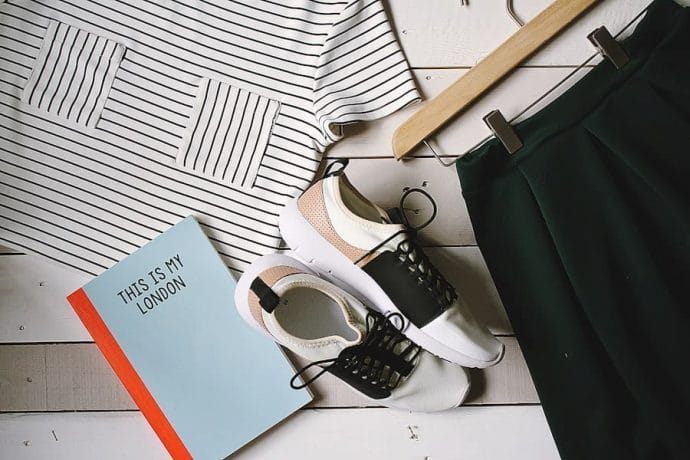Fashion 4 Women: Style That Speaks
Personal style is an intricate tapestry woven from individual preferences, cultural influences, and life experiences. It is not merely about the clothes one wears but rather a reflection of personality, values, and even aspirations. To truly understand personal style, one must delve into the nuances of self-expression.
This journey often begins with introspection—considering what colors resonate, which silhouettes feel comfortable, and what fabrics evoke a sense of confidence. For instance, someone who feels empowered in bold colors may gravitate towards vibrant hues, while another might find solace in muted tones and minimalist designs. Moreover, personal style is influenced by various external factors, including social circles, media, and fashion icons.
Observing how others express themselves can provide inspiration and insight into one’s own preferences. For example, a person might admire the eclectic style of a celebrity known for mixing vintage pieces with contemporary fashion, prompting them to explore thrift stores for unique finds. Ultimately, understanding personal style is an ongoing process that evolves with time, experiences, and changing tastes.
It requires a willingness to experiment and adapt while remaining true to oneself. Visit the Fashion Shop for the latest trends and styles.
Key Takeaways
- Personal style reflects your unique identity and preferences.
- A versatile wardrobe includes timeless, mix-and-match pieces.
- Trends should complement, not overpower, your core style.
- Dressing for your body type enhances confidence and comfort.
- Accessories and proper fit elevate and complete any outfit.
Building a Versatile Wardrobe
A versatile wardrobe serves as the foundation for any personal style journey. It consists of essential pieces that can be mixed and matched to create a multitude of outfits suitable for various occasions. The cornerstone of such a wardrobe is the classic white shirt—an item that transcends trends and can be dressed up or down effortlessly.
Pairing it with tailored trousers creates a polished look for the office, while tucking it into high-waisted jeans offers a casual yet chic vibe for weekend outings. In addition to staples like the white shirt, incorporating a well-fitted blazer can elevate any ensemble. A blazer can transform a simple outfit into something sophisticated, making it ideal for both professional settings and social gatherings.
Furthermore, investing in quality denim is crucial; a pair of well-constructed jeans can serve as a versatile base for countless outfits. By selecting pieces that complement each other in color and style, one can create a cohesive wardrobe that allows for creativity without overwhelming choices.
Incorporating Trends into Your Look

Fashion trends are ever-evolving, often reflecting the zeitgeist of society at any given moment. While it can be tempting to adopt every new trend that emerges, the key lies in incorporating them thoughtfully into one’s existing wardrobe. This approach ensures that personal style remains authentic while still embracing contemporary influences.
For instance, if oversized silhouettes are trending, one might choose to invest in an oversized sweater that pairs well with fitted trousers or a pencil skirt, striking a balance between current fashion and personal comfort. Another effective strategy for integrating trends is through accessories. A statement belt or a trendy handbag can breathe new life into classic outfits without requiring a complete wardrobe overhaul.
For example, pairing a timeless little black dress with a bold patterned scarf or chunky jewelry can create a fresh look that feels both modern and true to one’s style. By selectively choosing which trends to adopt and how to incorporate them, individuals can maintain their unique aesthetic while staying relevant in the ever-changing world of fashion.
Dressing for Your Body Type
Understanding one’s body type is essential for selecting clothing that enhances natural features and promotes confidence. Different body shapes—such as hourglass, pear, apple, and rectangle—each have distinct characteristics that can be accentuated or balanced through thoughtful clothing choices. For instance, individuals with an hourglass figure may choose to highlight their waist with fitted dresses or belted tops, creating an hourglass silhouette that celebrates their curves.
Conversely, those with a pear-shaped body might opt for A-line skirts and structured tops to draw attention upwards while providing balance to their proportions. Recognizing the importance of fit is crucial; clothing that fits well not only flatters but also contributes to overall comfort. Tailoring garments to suit one’s unique shape can make a significant difference in how an outfit looks and feels.
By dressing according to body type, individuals can cultivate a wardrobe that not only reflects their personal style but also enhances their confidence.
Accessorizing to Elevate Your Outfit
Accessories play a pivotal role in transforming an outfit from ordinary to extraordinary. They serve as the finishing touches that can express individuality and creativity. A well-chosen accessory can add depth and interest to even the simplest ensembles.
For example, layering delicate necklaces or stacking bracelets can create a bohemian vibe, while bold statement earrings can inject drama into a classic outfit. Moreover, accessories are not limited to jewelry; bags, hats, and shoes also contribute significantly to an overall look. A structured handbag can lend sophistication to a casual outfit, while a pair of stylish boots can add an edge to feminine dresses.
The key is to strike a balance—too many accessories can overwhelm an outfit, while too few may leave it feeling incomplete. By thoughtfully selecting accessories that resonate with personal style and complement the chosen outfit, individuals can elevate their looks effortlessly.
Finding the Perfect Fit

The importance of fit cannot be overstated when it comes to fashion. Ill-fitting clothing can detract from even the most stylish pieces, while well-fitted garments enhance appearance and boost confidence. Understanding one’s measurements is the first step toward finding the perfect fit; this includes knowing bust, waist, hip measurements, as well as inseam lengths for pants.
Armed with this knowledge, individuals can shop more effectively and make informed decisions when purchasing clothing. When trying on clothes, it’s essential to consider how they feel in addition to how they look. A garment may appear flattering in the mirror but may restrict movement or cause discomfort when worn throughout the day.
Tailoring is often necessary to achieve the ideal fit; even minor adjustments can make a significant difference in how clothing drapes on the body. For instance, taking in the waist of a dress or shortening sleeves on a blazer can transform an average piece into something exceptional. Prioritizing fit ensures that clothing not only looks good but also feels good, allowing individuals to move confidently through their day.
Mixing and Matching Patterns and Textures
The art of mixing patterns and textures adds an exciting dimension to personal style. While it may seem daunting at first glance, combining different prints and fabrics can create visually captivating outfits that showcase creativity and flair. The key lies in understanding how to balance contrasting elements harmoniously.
For example, pairing a floral blouse with striped trousers can work beautifully if the colors complement each other; this creates visual interest without overwhelming the eye. Texture also plays a crucial role in this mix-and-match approach. Combining materials such as denim with silk or leather with cotton can add depth to an outfit.
A textured knit sweater layered over a smooth satin skirt creates an intriguing contrast that draws attention without clashing. When experimenting with patterns and textures, it’s beneficial to start small—perhaps by introducing one patterned piece into an otherwise solid outfit before gradually expanding into bolder combinations. This method allows individuals to develop confidence in their styling choices while discovering new ways to express their unique aesthetic.
Dressing for Different Occasions
Dressing appropriately for various occasions is an essential skill that reflects respect for social norms and personal style alike. Each event—be it a formal wedding, casual brunch with friends, or a corporate meeting—calls for specific attire that aligns with its atmosphere and expectations. Understanding these nuances allows individuals to navigate their wardrobes effectively while still expressing their unique flair.
For formal events such as weddings or galas, opting for elegant dresses or tailored suits is typically expected. Choosing fabrics like silk or chiffon adds sophistication; accessorizing with understated jewelry enhances the overall look without overshadowing it. In contrast, casual outings may allow for more relaxed attire—think comfortable jeans paired with stylish sneakers and a chic top.
The versatility of smart-casual outfits enables individuals to transition seamlessly from day to night by simply swapping out accessories or layering pieces differently. In professional settings, dressing appropriately conveys competence and confidence. Business attire often leans towards tailored suits or smart dresses; however, incorporating personal touches—such as unique ties or statement blouses—can infuse individuality into otherwise conventional outfits.
Understanding the dress code of each occasion empowers individuals to make informed choices that reflect both their personal style and respect for the event at hand. By mastering these elements of personal style—from understanding individual preferences to dressing appropriately for various occasions—individuals can cultivate wardrobes that not only reflect their unique identities but also empower them in every aspect of life.




 Previous Post
Previous Post Next Post
Next Post